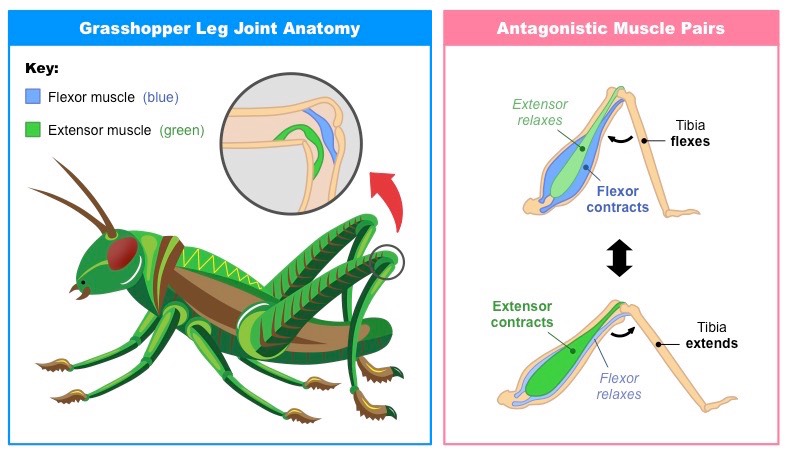![]()
Understanding:
• Movement of the body requires muscles to work in antagonistic pairs
Muscles connect to bones (via tendons) and contract to provide the force required to produce movement
- The muscle connects a static bone (point of origin) to a moving bone (point of insertion)
Skeletal muscles exist in antagonistic pairs (when one contracts, the other relaxes) to enable opposing movements
- Opposing movements may include: flexion vs extension, abduction vs adduction, protraction vs retraction, etc.
![]()
Application:
• Antagonistic pairs of muscles in an insect leg
Many types of insects (including grasshoppers and praying mantises) have hind legs that are specialised for jumping
- The jointed exoskeleton of the hind leg is divided into three parts: femur (upper leg), tibia (middle leg) and tarsus (lower leg)
- The femur and tibia are connected by two antagonistic muscles: flexor tibiae muscle and extensor tibiae muscle
When the flexor muscle contracts, the extensor muscle relaxes and the tibia and femur are brought closer together
- This retracts the hind quarters in preparation for pushing off the ground
When the extensor muscle contracts, the flexor muscle relaxes and the tibia is pushed away from the femur
- This extends the hind quarters and causes the insect to jump
Antagonistic Muscle Pairs in an Insect Leg

Jumping Motion of a Praying Mantis
Video courtesy of Burrows et al. (Current Biology, 2015)
